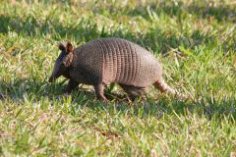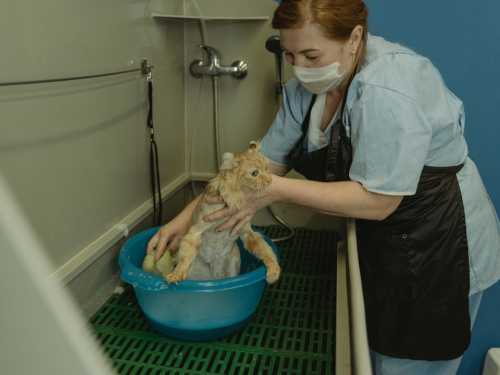
A distant relative of the sloth and anteater, the armadillo was introduced to Texas from Mexico in the 19th century. The armadillo's name comes from the Spanish word armadillo, meaning “small but armored.”
The nine-banded armadillo, Dasypus novemcinctus, is found in America. The body length is from 12 cm to 1 m, not counting the tail, and the weight is from 0.3 to 50 kg. The armadillo is covered with a thick shell of horny plates on top and sides; the plates are arranged in belts connected by elastic connective tissue, which gives the shell mobility. Below is a soft belly covered with hair.
If you remember Kipling's fairy tale, you think that armadillos can curl up like hedgehogs? Our American nine-banded ones cannot (only three-banded ones can). But when they get scared, they can jump straight up. This quality, by the way, is often the reason armadillos die under cars – jumping, they hit the wheels and die.
Armadillos have very large claws, which they use to dig up the ground and make holes. Sometimes they have up to 15 holes, with several entrances and exits. The number of their teeth varies from 30 to 32, they are cylindrical, without enamel and without roots.
Armadillos feed on insects, larvae, ants, which they dig out of the ground. They have poor vision, but they have an excellent sense of smell and can sniff out food hidden at a depth of 12 centimeters. In the summer, they usually go hunting at night, in the winter – during the day.
It is interesting to watch how armadillos cross streams and rivers. If the stream is not wide, they simply walk along the bottom, holding their breath for up to 6 minutes. If the river is wide, armadillos can take air into their stomachs, doubling their size, and this air allows them to stay afloat and swim. After a couple of days, they manage to get rid of the excess air. This phenomenon has not yet been studied, no one knows how they do it.
Armadillos, along with chimpanzees and humans, are the only mammals that mate in the “missionary position.” Mating typically occurs in July, but embryonic development is delayed until November, and the babies are born in March. Armadillos always give birth to quadruplets, which are identical twins that develop from a single fertilized egg. Newborn armadillos are sighted and covered in soft skin, and are able to walk within hours of birth.
Armadillos are the only mammals other than humans and mice that can get leprosy. Therefore, the sale of live armadillos is prohibited in the state of Texas. However, armadillo meat is edible and tastes like pork. During the Great Depression, Texans stocked up on armadillo meat, and today, armadillo stew and chili are popular dishes in Texas and Arkansas.
In 1995, the armadillo was adopted as the state animal in the small mammal (large – longhorn ox) category because the armadillo, like a true Texan:
– ready for change;
– loves his land and freedom;
– began migrating to Texas lands around the time Texas gained independence.





